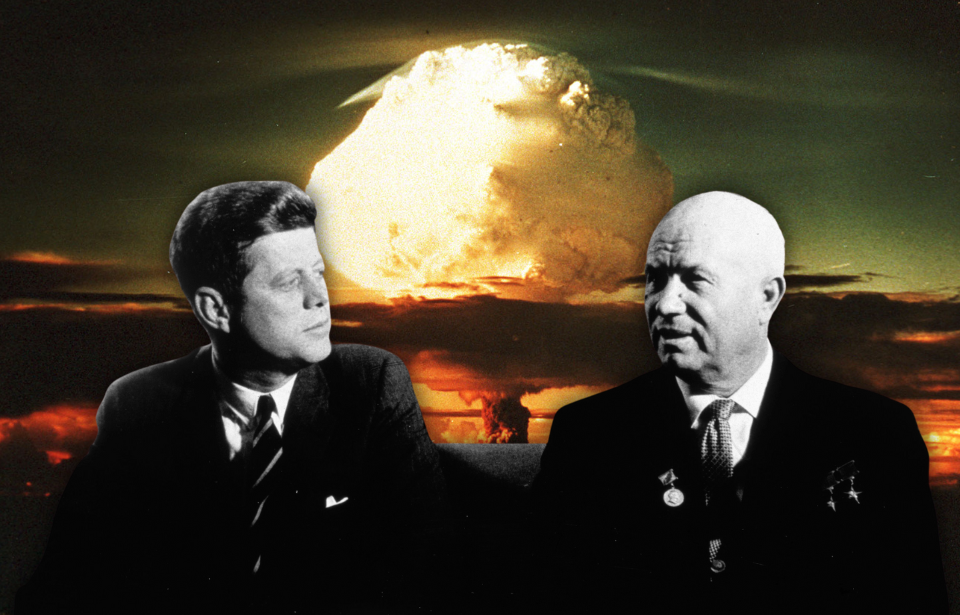There were numerous times throughout the Cold War where the world nearly ended. The Cuban Missile Crisis, for example, saw the United States and Soviet Union locked in a nuclear stalemate. For 13 days, tensions soared, with many countries fearing the outbreak of nuclear war. There were several other instances during the conflict that could have easily turned sour and ultimately led to World War III.
A Lockheed U-2 pilot almost sparked World War III
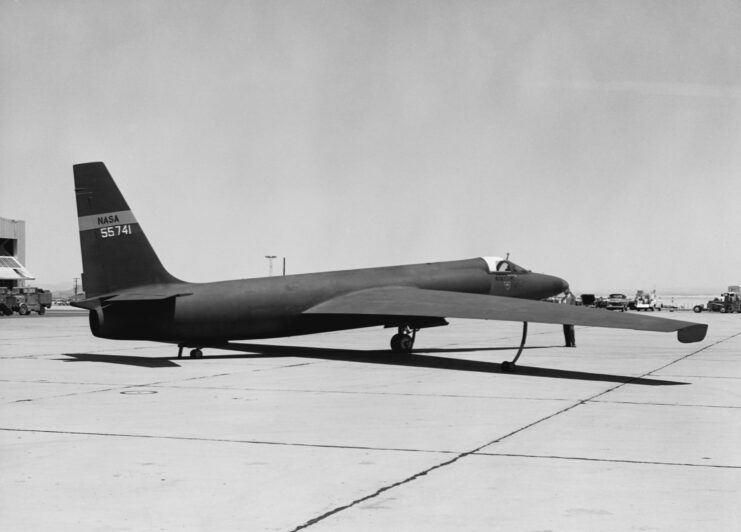
On October 27, 1962, just five days after US President John F. Kennedy made a national broadcast warning the nation of Soviet missiles in Cuba, a Lockheed U-2 took off on a routine flight from Alaska. Pilot Capt. Charles Maultsby was to fly over Novaya Zemlya, where the Soviets were conducting nuclear tests. The Siberian island was located about 1,000 miles from the North Pole, and Maultsby was to use special filter paper to test for radiation.
As the U-2 approached the area, Maultsby’s compass began to point toward the Earth’s magnetic field, forcing him to switch to celestial navigation. Unfortunately, the aurora borealis had other plans, making this form of navigation nearly impossible.
The pilot wound up flying his spy aircraft way off-course, accidentally crossing into the USSR. Soviet MiGs scrambled once Maultsby was detected, with the objective being to shoot down the U-2. Maultsby radioed “Mayday,” prompting interceptors to locate his position, with two Convair F-102 Delta Daggers ordered to bring the pilot home.
Maultsby’s U-2 safely retreated from Soviet airspace and landed back in Alaska. The following day, Nikita Khrushchev agreed to dismantle all Soviet missiles in Cuba. He also sent a letter to Kennedy, explaining the U-2 could have easily been mistaken “for a nuclear bomber, which might push us to a fateful step” – translation: the incident could have triggered something much larger, meaning the world could have very nearly ended during the Cold War.
Vasili Arkhipov refused to launch a nuclear-tipped torpedo
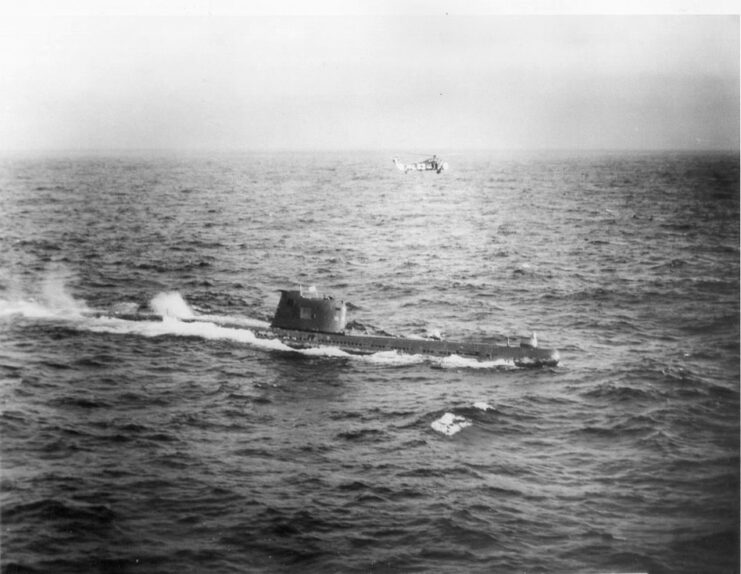
One date during the Cold War where the world could have very nearly ended was October 27, 1962. After it was revealed Soviet missiles were in Cuba, the US ordered a naval blockade around the country. The US Navy began dropping signaling depth charges into the water, to force Soviet submarines to surface. For one nuclear-armed vessel, however, these non-lethal warning charges were taken as live explosives.
The captain of B-59 believed the action to be the opening attack of a third World War by the US, having had no contact with the Kremlin for several days, and ordered the submarine’s nuclear-tipped torpedo be prepared for launch. Thankfully, it couldn’t be fired without being cleared by all three senior officers. For the most part, the crew agreed with the captain. However, one officer, second-in-command Vasili Arkhipov, refused to agree to the plan.
After much arguing, Arkhipov, who also doubled as the Commodore of the entire submarine flotilla, convinced the captain and crew not to launch the torpedo and, instead, surface and await further instruction from Moscow. B-59 made her way back to the Soviet Union without incident; if it weren’t for Arkhipov, a nuclear brawl could have easily come about.
A computer glitch nearly ended in disaster
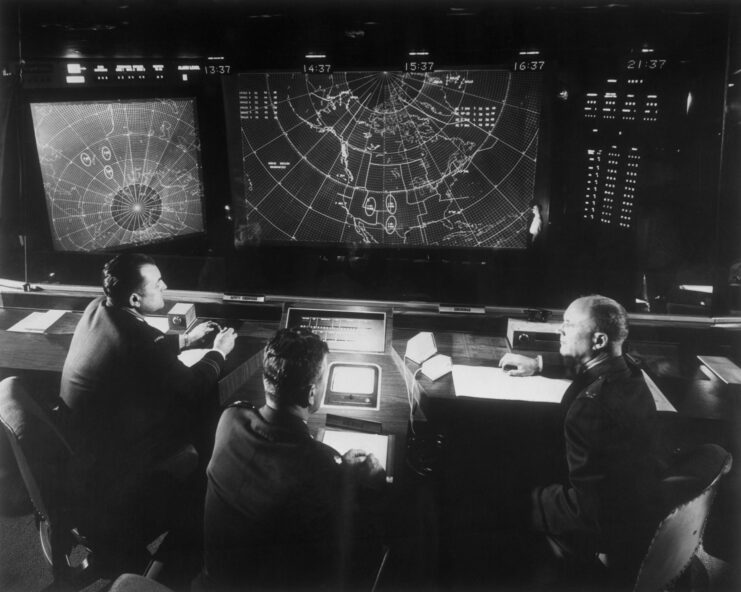
As the Cold War progressed, so did technology, and it had the potential to put an end to the world as we knew it, should it have ended up being used incorrectly. Both the US and Soviets became reliant on computer systems to detect potential nuclear attacks. Unfortunately, they were subject to glitches, including a nuclear close-call that occurred at NORAD on November 9, 1979.
At 3:00 AM that morning, technicians were alerted to a massive nuclear airstrike headed for the US. Several interceptors were scrambled after control centers were warned of the attack. Even President Jimmy Carter‘s “doomsday” aircraft was ordered to take off following the alert. The US truly believed a nuclear war was inevitable, and officials were ready to counterattack. The problem was the Soviets hadn’t launched a barrage of nuclear missiles at America.
Within minutes of the initial alert coming through, the technicians looked at satellite data to verify the attack and realized there were no inbound missiles detected, nor any enemy bombers approaching. It turned out someone had accidentally run a realistic training program that simulated a Soviet nuclear attack. Known as the “Training Tape Incident,” it was run on the same computer that ran the nation’s early-warning system.
The mistake nearly resulted in a full-blown counterattack by the US, which would have undoubtedly led to nuclear war. Soviet leader Leonid Brezhnev even wrote to President Carter to outline the “tremendous danger” the mistake caused. Unfortunately, computer glitches would bring America to the brink of nuclear war a few more times before the end of the Cold War.
Stanislav Petrov went against protocol
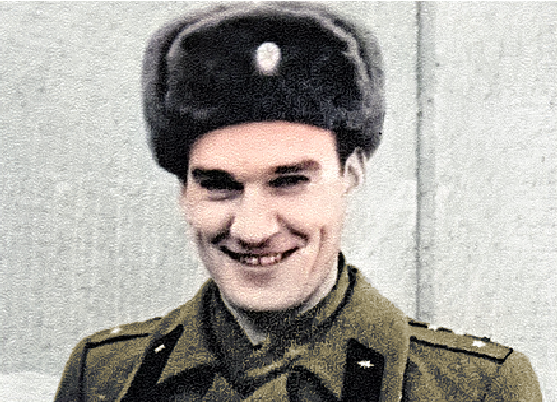
If there’s one moment where the world could have ended during the Cold War, it was this incident that occurred on September 26, 1983. At around midnight, a missile bunker, commanded by Lt. Col. Stanislav Petrov, went into panic mode. Their satellite-based detection system had alerted them that the US had fired five Intercontinental Ballistic Missiles (ICBMs) toward the Soviet Union.
However, this was a false alarm. A Soviet satellite had mistaken a glint of sunlight near Montana as a missile launch. After the detection system sounded, protocol demanded Petrov report any and all signs of missile launches to the Soviet high command. Thankfully, the lieutenant colonel trusted his intuition and refrained from reporting the alarm.
Petrov was aware that the satellites weren’t perfect. In fact, they were prone to making mistakes. It made little sense to him that the US would launch a nuclear war with only five missiles. By choosing to ignore the alarms, it soon came to light that no weapons had been fired.
Nuclear war was, once again, narrowly averted.
Able Archer 83
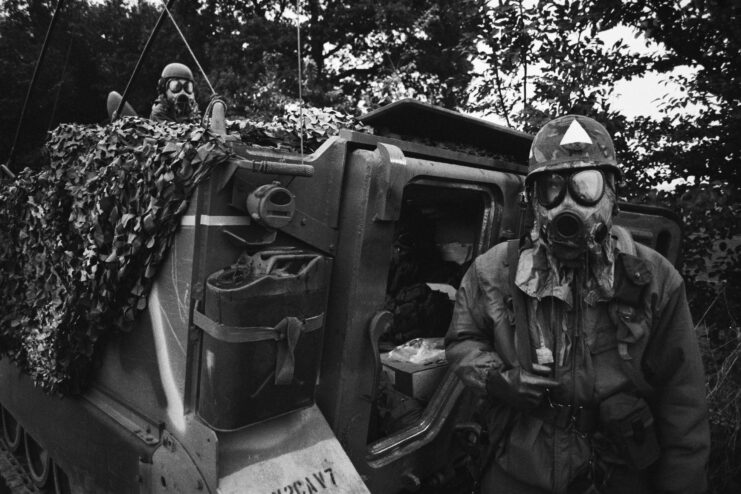
The NATO exercise known as Able Archer 83 nearly ended in a full-scale war.
It was simulation of a conventional attack on Europe by the Soviet Union, which could be met with a counterattack launched by the US. Simulations such as this weren’t uncommon, especially during the Cold War, but this exercise took on an air of realism that surpassed previous ones.
The US moved 19,000 troops to Europe, raised its alert status to DEFCON 1 and relocated command elements in preparation for the war game. These are steps typically taken during times of war. Such a show of military force aligned perfectly with how the Soviets thought the Americans would begin a nuclear strike, leading military officials to stand on high-alert, wary the exercise was a cover-up for a real strike.
More from us: The Nuclear War Between Russia and China That Almost Happened
With the Americans completely unawares, declassified government documents later revealed the Soviets were “on a hair trigger.” They’d readied their nuclear arsenal and prepared units in East Germany and Poland. The country’s forces stayed this way until November 11, 1983, when the exercise reached its completion.
Of course, no real attack ever came about, but the Soviets were prepared for a potential World War III.
